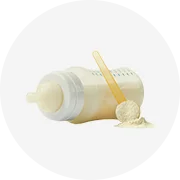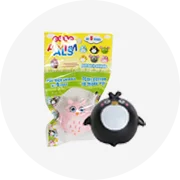Self inflating balloons stand at the exciting intersection of science and amusement. These interesting novelties offer a glimpse into the realm of chemical reactions, gas laws, and the fun one can find in practical science applications. It is always thrilling to observe these colorful spheres magically inflate without any mechanical intervention, a marvel that is courtesy of the intriguing chemistry behind self-inflating balloons.
The self-inflating balloons experiment
The self-inflating balloons experiment is an engaging demonstration of the concepts of chemistry, and more specifically, chemical reactions and gas laws. The prevailing magic trick behind this scientific wonder resides within the balloon. Most self-inflating balloons contain two vital ingredients: a small packet of baking soda (a solid base) and vinegar or citric acid (a liquid acid).
When these two components mix, a chemical reaction ensues, generating carbon dioxide gas, a by-product of the acid-base reaction. The gas occupies more space than the two initial constituents, causing the balloon to inflate. This phenomenon perfectly illustrates the principles of gas generation and volume expansion, offering a practical science lesson the observers can touch, see and marvel at. The acid-base reaction that causes the self-inflation in these balloons at home can be stated as follows: Acetic acid (in vinegar) + Sodium Bicarbonate (baking soda) —> Sodium Acetate + Water + Carbon Dioxide gas. Here, the production of carbon dioxide gas is what leads to the inflation of the balloon. This experiment also extends its hands toward understanding safety precautions. One should ensure the balloon does not inflate to the extent of bursting, as the chemical reaction can be vigorous based on the measures of reactants used. This experiment not only serves an educational purpose but also sparks interest and curiosity in science among young learners.
The self-inflating balloons on a stick and straw
Self-inflating balloons on a stick and with a straw are entertaining variations of self-inflating balloons that inspire wonder and engagement. Self-inflating balloons on a stick offer the convenience of portability, allowing users to effortlessly hold and carry the inflated balloon without the need for tying or holding it with their hands. This feature makes them a popular choice for parties and events, adding a touch of excitement and ease of enjoyment.
On the other hand, self-inflating balloons with a straw provide an interactive and engaging experience. With a straw inserted into a small valve, users can actively participate in the inflation process by blowing air into the balloon. Watching as the balloon inflates right in front of their eyes, users experience a sense of control and engagement that heightens their enjoyment. Children particularly love this variation, as it allows them to be actively involved in the magical inflation of the balloon.
The self-inflating balloons project and research
Multiple self-inflating balloons project and research initiatives have delved into the science behind these self-inflating balloons. Researchers and students alike have found this area both educative and fascinating, leading to numerous science fair projects, papers, and studies.
The self-inflating balloons project provides an excellent hands-on means of demonstrating chemical reactions and gas laws to students. It also encourages curious minds to explore further into the field of chemistry, providing a practical application to theoretical knowledge. The self-inflating balloons research in this area looks into optimizing the chemicals used, exploring environmentally friendly alternatives, and finding efficient ways to achieve the fastest and most reliable inflation. This intriguing blend of practical fun and scientific principles continues to unravel the numerous potential applications of self-inflating balloons.










































 浙公网安备 33010002000092号
浙公网安备 33010002000092号 浙B2-20120091-4
浙B2-20120091-4